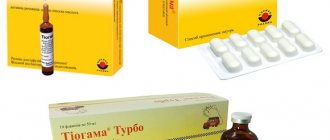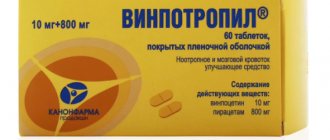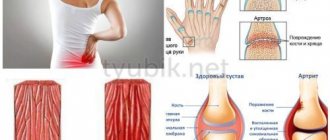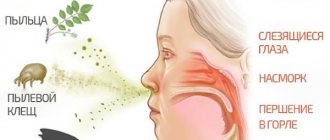Description and composition
The active ingredient in all forms of release is thioctic (alpha-lipoic) acid.
Its concentration in one ampoule or tablet is 600 mg. This is a compound of endogenous origin that every person normally has. Thioctic acid takes part in vital biochemical reactions and acts as a coenzyme in the process of oxidative decarboxylation of keto acids. With diabetes mellitus, metabolic products accumulate in a person, which lead to a deterioration in blood flow in the nervous tissue, the appearance of areas of hypoxia and ischemia. This is accompanied by increased production of free radicals, resulting in peripheral nerve damage.
Thioctic acid prevents the pathological processes described above. It helps reduce the amount of harmful metabolic products, improve blood flow inside the nervous tissue, increase the level of antioxidants and slow down destructive processes.
After a course of treatment with Thioctacid, an improvement in the functionality of peripheral nerves is observed, which leads to the restoration of sensory sensations that were impaired.
Thioctic acid is capable of neutralizing toxic compounds that enter the body exogenously.
The production technology of Thioctacid tablets ensures rapid release of the active component. Alpha lipoic acid is quickly absorbed into the blood and distributed throughout the tissues of the body. However, the bioavailability of the oral form is significantly lower. Than with intravenous administration of the drug.
In addition, thioctic acid enhances the action of insulin and increases the utilization of glucose, which also helps to inhibit destructive processes in tissues during.
Thus, the drug has the following effect:
- Hypolipidemic.
- Hepatoprotective.
- Hypocholesterolemic.
- Hypoglycemic.
- Neurotrophic.
Directions for use and doses
The daily dose at the beginning of treatment for severe sensitivity disorders in severe diabetic polyneuropathy is 1 ampoule of Thioctacid 600 T (which corresponds to 600 mg of thioctic acid) for 2-4 weeks.
Thioctacid 600 T can be used as an infusion in an isotonic sodium chloride solution (infusion volume 100-250 ml) for 30 minutes. Intravenous administration should be carried out slowly (no faster than 50 mg of thioctic acid, i.e. 2 ml of Thioctacid 600 T solution per minute). In addition, it is possible to administer an undiluted solution intravenously using an injection syringe or perfusor. In this case, the administration time should be at least 12 minutes.
Recommendations for infusions
Due to the sensitivity of the active substance to light, ampoules should be removed from the carton only immediately before use. Use only isotonic sodium chloride solution as a solvent for Thioctacid 600 T infusion solution. The infusion solution should be protected from light (for example, in aluminum foil). The solution for infusion, protected from light, is valid for 6 hours.
Subsequently, they switch to maintenance therapy with dosage forms of a-lipoic acid for oral administration at a dose of 300-600 mg per day.
The basis of treatment for diabetic polyneuropathy is optimal treatment of diabetes mellitus.
Medicine Thioctacid BV 600 instructions for use and recommended doses
It is worth understanding that the dosage, regimen and duration of taking the drug can only be determined by a doctor, since much here depends on the individual characteristics of the patient and the presence of certain concomitant diseases.
As a rule, the initial daily dose of Thioctacid BV is 600 mg. The tablet is taken in the morning, half an hour before breakfast. It must be swallowed with a glass of water (do not chew it). Treatment in most cases lasts 2-4 weeks, after which you need to take a break for a month.
Complex therapy of atherosclerosis and liver diseases also includes taking the drug Thioctacid, but the daily dose is 200-600 mg. Treatment lasts several weeks.
Reviews
Reviews of Thioctacid contain mostly positive points.
Patients who have used it to eliminate unpleasant symptoms of neuropathy note a rapid effect. They like that they can carry out combination treatment, combining drip administration of the drug with tablets.
Most patients find minor disadvantages of the drug quite tolerable , such as discomfort after injections or the appearance of aggressiveness.
They speak with gratitude about the drug, which improves well-being and increases performance.
At the end of the page you can read the available reviews and, if you wish, leave your own.
Indications and contraindications
The medicine can be used for various diseases if a specialist believes that it will bring the necessary results. But the main pathologies for which the use of these tablets is recommended are diabetic and alcoholic polyneuropathy. With the help of thioctic acid it is possible to reduce the manifestations of these disorders.
If a patient has contraindications to the use of a medication, the doctor must select a replacement drug. The use of Thioctacid in this case is prohibited.
Contraindications include:
- pregnancy;
- natural feeding;
- childhood and adolescence;
- presence of intolerance.
Due to the presence of restrictions, you should not self-medicate.
pharmachologic effect
Pharmacodynamics.
Thioctic (alpha-lipoic) acid is found in the human body, where it functions as a coenzyme in the oxidative phosphorylation reactions of pyruvic acid and alpha-keto acids.
Thioctic acid is an endogenous antioxidant; according to its biochemical mechanism of action, it is close to B vitamins.
Thioctic acid helps protect cells from the toxic effects of free radicals arising in metabolic processes; it also neutralizes exogenous toxic compounds that have entered the body.
Thioctic acid increases the concentration of the endogenous antioxidant glutathione, which leads to a decrease in the severity of symptoms of polyneuropathy.
The drug has hepatoprotective, hypolipidemic, hypocholesterolemic, hypoglycemic effects; improves neuronal trophism.
The result of the synergistic effect of thioctic acid and insulin is an increase in glucose utilization.
The drug (immediate release) is an optimized oral dosage form that avoids the high variability in plasma concentrations of thioctic acid.
Pharmacokinetics.
When taking the drug orally, thioctic acid is quickly and completely absorbed from the gastrointestinal tract.
Taking the drug simultaneously with food may reduce the absorption of thioctic acid.
Taking the drug as recommended 30 minutes before meals allows you to avoid unwanted interactions with food, since the absorption of thioctic acid is already complete at the time of eating.
The maximum concentration of thioctic acid in the blood plasma is reached 30 minutes after taking the drug and is 4 mcg/ml.
Thioctic acid has a “first pass” effect through the liver.
The absolute bioavailability of thioctic acid is 20%.
The main metabolic pathways are oxidation and conjugation.
Thioctic acid and its metabolites are excreted by the kidneys (80-90%).
The half-life is 25 minutes.
Side effects
Side effects develop infrequently and usually disappear quickly after 5-7 days of use. The most common is dizziness, which gradually decreases, it quickly disappears when Thioctacid is discontinued.
From the gastrointestinal tract, nausea occurs, very rarely leading to vomiting, diarrhea, pain in the stomach and intestines, and distortion of taste sensations are possible.
Allergic reactions are rare, itching and urticaria are very rare, and anaphylactic shock is extremely rare. Occasionally (due to increased glucose utilization), a decrease in blood glucose levels and symptoms of hypoglycemia may occur (headaches, heaviness in the head, increased sweating, etc.).
Overdose
When taking thioctic acid in doses of 10-40 g, serious signs of intoxication are possible: including generalized convulsive seizures; cases of severe bleeding disorders; gross changes in acid-base balance leading to lactic acidosis; development of hypoglycemic coma. Sometimes the outcome can be fatal.
In case of an overdose of Thioctacid BV (at doses equal to 10 tablets or more for an adult, or more than 50 mg per kg of body weight for a child), immediate hospitalization is required.
In case of overdose, symptomatic treatment is carried out; if necessary, anticonvulsant therapy should be carried out, as well as measures should be taken to maintain body functions.
Side effects
Thioctacid reduces the concentration of glucose in the blood, which can cause diplopia (double vision), headache and dizziness, increased sweating, nausea, diarrhea and abdominal pain, itchy skin rashes, changes in taste, anaphylactic shock, convulsions, petechiae, addiction to bleeding.
Injecting the concentrate too quickly may increase intracranial pressure. This is manifested by holding your breath and a rush of blood to the head. Typically, these symptoms go away on their own. No discontinuation of the drug or treatment is required.
Overdose
Thioctacid is available in pharmacies by prescription. Overdose most often occurs when a large number of tablets are accidentally taken in combination with alcoholic beverages.
In this case, symptoms of severe intoxication occur:
- Depression of consciousness;
- Psychomotor disorders;
- Convulsive attacks, as in epilepsy;
- Lactic acidosis.
In case of severe poisoning, the following may develop:
- Multiple organ failure;
- Myelosuppression (decrease in the concentration of platelets and leukocytes in the blood);
- DIC syndrome (blood clotting disorder);
- Hemolysis (destruction of red blood cells by a bacterial toxin);
- Rhabdomyolysis (release of free myoglobin into the blood);
- Shock;
- Hypokalemia (decreased potassium concentration in the blood).
If you suspect an overdose, you should call an ambulance.
Before her arrival, try to rinse your stomach and take sorbent medications.
After hospitalization in the intensive care unit, symptomatic treatment is carried out aimed at stopping seizures and restoring the functioning of internal organs.
It should be noted that there is no specific antidote for Thioctacid.
Contraindications
Clinical trials have not revealed any particular contraindications to the use of the drug Thioctacid.
But it is not recommended to take it:
- Pregnant women;
- During breastfeeding;
- In childhood and adolescence (up to 18 years);
- People with hypersensitivity to the active substance of the drug and other components.
Thioctacid during pregnancy
The drug is completely safe. However, it is recommended to take it during pregnancy only for medical reasons and strictly under the supervision of your doctor.
At the slightest sign of a negative effect on the body of the expectant mother or baby, the drug should be discontinued immediately.
Application of Thioctacid T
A solution of the drug Thioctacid T (600 mg) in medical practice is used for direct intravenous administration. The substance is photosensitive, so the ampoules are dark in color, and the bottle with the solution is covered with foil. Intravenous drip administration slowly. Dose 600 mg (1 ampoule) per day. As prescribed by the doctor, the dose may be increased depending on the patient's condition.
If neuropathy in diabetes mellitus is severe, the drug is administered intravenously for 2 to 4 weeks.
If the patient cannot receive Thioctacid 600 T droppers in a medical facility, if necessary, they can be replaced by using Thioctacid BV tablets in an equivalent dosage, since they provide a sufficient therapeutic level of the active substance in the body.
According to the standards of therapy of the Ministry of Health of the Russian Federation, thioctic acid is indicated for hepatitis, radiculopathy, etc.
Price
The price of Thioctacid is made up of various factors: trade markup in a particular pharmacy chain, transportation costs, concentration of the active component, number of tablets/ampoules in the package, etc.
| Release form | Amount in a package | Price in Russia | Price in Ukraine |
| Tablets 600 mg | 30 pcs. | from 1630 to 1910 rub. | 520 UAH |
| Tablets 600 mg | 100 pieces. | from 2775 to 3180 rub. | 1300 UAH |
| Solution 600 mg/24 ml | 5 amp. | from 1399 to 1642 rubles. | 470 - 550 UAH. |
Interaction with other drugs
A decrease in the effectiveness of cisplatin was noted when prescribed simultaneously with Thioctacid 600 BV. Thioctacid 600 BV binds metals. As a general rule, it should not be prescribed concomitantly with drugs containing metals (for example, iron, magnesium, calcium-containing dairy products).
If Thioctacid 600 BV is taken 30 minutes before breakfast, preparations containing iron or magnesium can be taken at lunch or in the evening.
Since the hypoglycemic effect of insulin or oral antidiabetic agents may be enhanced, regular monitoring of blood sugar is recommended, especially at the beginning of therapy with Thioctacid 600 BV. In some cases, the dose of insulin or oral antidiabetic medications may need to be reduced to avoid symptoms of sugar deficiency (hypoglycemia).
special instructions
There are a number of special instructions for the use of the drug Thioctacid.
Interaction with other drugs
When thioctic acid and cisplatin are used simultaneously, a decrease in the effectiveness of cisplatin is observed. Thioctic acid has the ability to bind metals; therefore, it is not prescribed simultaneously with drugs containing metal molecules, for example, iron preparations (Ferrumlek and others), magnesium (Magne B6), calcium (calcium D3), etc. .
It is recommended to take Thioctacid 600 BV tablets 30 minutes before breakfast, and metal-containing drugs should be taken at lunchtime or in the evening. For the same reason, during therapy with Thioctacid 600 BV, the consumption of dairy products should be postponed to the second half of the day.
With simultaneous therapy of thioctic acid with insulin and other hypoglycemic agents, their effect may be enhanced; therefore, monitoring of blood glucose levels is required, especially at the beginning of therapy with Thioctacid. In some cases, it is permissible to reduce the dosage of hypoglycemic drugs in order to avoid the development of hypoglycemic phenomena.
The effect of thioctic acid can be weakened by ethanol and its metabolites. Considering that alcohol consumption contributes to the risk of developing polyneuropathy and also reduces the effectiveness of Thioctacid BV, patients should refrain from drinking alcohol, both during drug therapy and in the periods between treatment.
During the treatment of diabetic polyneuropathy, it is necessary to maintain an optimal level of glucose concentration in the blood.
Instructions for use Thioctacid 600, dosage
Standard dosages
Thioctacid 600 injections are administered intravenously (stream, drip). Tablets Thioctacid 600 - dosage 600 mg/day for 1 dose (in the morning on an empty stomach 30-40 minutes before breakfast), prescription 200 mg 3 times a day is less effective.
Special
In severe forms of polyneuropathies - slowly (50 mg/min), 600 mg or IV drip, 0.9% NaCl solution once a day (in severe cases, up to 1200 mg is administered) for 2-4 weeks. Subsequently, they switch to oral therapy (adults – 600-1200 mg/day, adolescents – 200-600 mg/day) for 3 months. IV administration is possible using a perfuser (duration of administration is at least 12 minutes).
The method of treating patients suffering from diabetic polyneuropathy with thioctacid is well established and has a solid scientific and practical basis. Therapy begins with the administration of thioctacid intravenously at a dose of 600 mg for two weeks.
When treating with potent medications and Thioctacid simultaneously, you should strictly follow the recommendations of your doctor.
Features of application
Many patients complain about the long time it takes to administer the drug Thioctacid 600 T in the form of a solution for intravenous infusion. Despite this, doctors recommend this particular form of the drug at the beginning of treatment for the disease. It is completely absorbed and allows you to titrate the effective dosage as accurately as possible.
When using the drug, you should refrain from driving vehicles and working with potentially dangerous mechanisms.
If there is a need to take these drugs simultaneously, then you need to maintain an interval of five to six hours between taking them.
The drug in ampoules is not exposed to light until direct use. The prepared solution is used within six hours and protected from light.
Instructions for use
Release form
You can purchase the drug Thioctacid in one of two dosage forms.
Liquid transparent concentrate of pale yellow color for intravenous injection (Thioctacid T). Available in dark glass ampoules:
- 4 ml capacity (packs of 10 and 20 pieces), contains 100 mg of thioctic acid, designated Thioctacid 100T;
- with a capacity of 24 ml (packs of 5 and 10 ampoules), contains 600 mg of active substance, designated Thioctacid 600T.
Tablets of yellow-green color, biconvex oblong shape, packaged in 30/60/100 pieces per package:
- short-acting (Tioctacid), contains 200 mg of active substance;
- prolonged (Thioctacid HR/ Thioctacid BV) action, with a concentration of the active component of 600 mg.
Compound
The main active ingredient of the drug Thioctacid is thioctic acid (alpha-lipoic acid).
- It replenishes the deficiency of ATP molecules, providing adequate nutrition to the nerve fibers. Their motor conductivity and sensitivity are restored. Symptoms of neuropathy (numbness of the limbs, burning and pain in the area of the affected nerve) disappear.
- It is a powerful antioxidant that protects cells from damage by free radicals.
- Thanks to its antitoxic properties, the neutralization and removal of toxic substances from the body is accelerated.
- Possessing an insulin-like effect, it allows you to maintain optimal sugar levels using smaller doses of insulin.
- Being polyunsaturated, thioctic acid reduces the concentration of lipoproteins with low density. Has a hepatoprotective effect.
The composition of the tablets (both long-acting and short-acting) includes excipients:
- Aluminum salts of indigo carmine and quinoline yellow;
- Titanium oxide;
- Talc;
- Macrogol 600;
- Magnesium stearate;
- Hypromellose.
The injection concentrate contains trometamol and distilled water.
Indications for use
The drug Thioctacid belongs to metabolic drugs.
Thioctic acid, which is part of it, is produced by the body. But with alcohol abuse, diabetes and a number of other diseases, the amount synthesized by the body is not enough for the normal functioning of nerve cells.
An additional portion of the active metabolite restores the structure of nerve fibers and increases their functionality.
Thioctacid is prescribed for the following diseases:
- Diabetic sensorimotor polyneuropathy;
- Neuropathy caused by alcohol abuse;
- Hyperlipidemia;
- Hepatitis, cirrhosis and fatty liver;
- Poisoning of the body with toxins of poisonous mushrooms (in particular toadstool) or salts of heavy metals;
- For the purpose of preventing vascular atherosclerosis (including coronary ones).
Video: “Using Alpha Lipoic Acid”
Mode of application
Thioctacid should be taken in the dosage strictly prescribed by the doctor. It is selected individually for each patient.
Tablets with a short release period of the active ingredient. They are taken every 4 hours, 30 minutes before meals. The tablets are swallowed without chewing and washed down with plenty of liquid.
Short-acting thioctacid:- Long-acting drug Thioctacid BV: Take one tablet once a day on an empty stomach (half an hour before breakfast). It is not recommended to take during meals, as the absorption of thioctic acid is reduced.
- Thioctacid T: The concentrate can be used in pure form (for intravenous injection) or prepared in saline solution (drip method). The drug concentrate is sensitive to light. Therefore, it is recommended to remove the ampoules immediately before administration. When preparing the solution, the bottle must be closed with foil.
Interaction with other medications
When treating with potent medications and Thioctacid simultaneously, you should strictly follow the recommendations of your doctor.
In particular:
- Increase the dosage of Cystoplastin, the effect of which is reduced by thioctic acid.
- Reduce the dosage of lipid-lowering (insulin, etc.) drugs, as Thioctacid reduces the concentration of glucose in the blood.
- Maintain an interval between taking Thioctacid and drugs that contain compounds of aluminum, calcium, magnesium, iron and other trace elements. Mineral-containing dietary supplements are best taken in the afternoon.
- Avoid drinking alcoholic beverages.
- Thioctacid should not be taken with sweet tea or drinks containing Riegner sugars, fructose, or glucose.
Video: “What is polyneuropathy”
pharmachologic effect
Alpha lipoic (thioctic) acid is a vitamin-like substance with coenzyme properties. In the body it is formed during the oxidative decarboxylation of alpha-keto acids.
In diabetes mellitus, as a result of hyperglycemia, the content of advanced glycation end products increases. This process leads to a decrease in endoneural blood flow and the development of endoneurial hypoxia. At the same time, along with an increase in the formation of free radicals, the content of antioxidants, in particular glutathione, decreases.
Alpha lipoic (thioctic) acid is a vitamin-like substance with coenzyme properties. In the body it is formed during the oxidative decarboxylation of alpha-keto acids.
In diabetes mellitus, as a result of hyperglycemia, the content of advanced glycation end products increases. This process leads to a decrease in endoneural blood flow and the development of endoneurial hypoxia. At the same time, along with an increase in the formation of free radicals, the content of antioxidants, in particular glutathione, decreases.
In experimental studies conducted on rats, it was shown that alpha-lipoic acid reduces the formation of advanced glycation end products, improves endoneurial blood flow, and increases glutathione levels. These data suggest that alpha lipoic acid may help improve peripheral nerve function. This applies to sensory disturbances in diabetic polyneuropathy, such as dysesthesia, paresthesia (burning, pain, numbness, tingling). In clinical studies in patients with diabetic polyneuropathy, the administration of alpha-lipoic acid led to a decrease in sensory disturbances accompanying diabetic polyneuropathy (pain, paresthesia, dysesthesia, numbness).
Medicinal properties
The drug thioctacid is a metabolic substance. The active substance is one of the strongest antioxidants that takes part in the oxidation of pyruvic acid, and is also a coenzyme of mitochondrial complexes. In terms of pharmacological properties, it manifests itself like B vitamins, which have neurotropic and restorative properties. For diabetics, the substance is good because it lowers blood sugar levels and protects against the effects of free radicals in the blood.
After oral administration, almost complete absorption and assimilation of the active substance occurs. It should not be combined with the parallel use of food products, otherwise the bioavailability of the drug will greatly decrease; it is better to take the medication on an empty stomach. The drug reaches its peak concentration in the blood plasma half an hour after administration and is excreted from the body along with urine.
Analogs
The following can be recommended as synonyms (drugs with the active substance of the same name):
Espa-Lipon;- Thiolipon;
- Thiolepta;
- Thioctic acid;
- Thiogamma;
- Octolipen;
- Neurolipon;
- Lipothioxone;
- Lipoic acid;
- Lipomide;
- Berlition.
Berlition is practically no different from Thioctacid. It contains 300 mg of the active substance and is considered most suitable for long-term therapy.
Among analogues, the best in terms of cost and effectiveness are:
- Kuvan tablets;
- Capsules Zaveska and Orfadin;
- Homeopathic medicine Gastrikumel;
- Chewable tablets Bifiform Kids.








